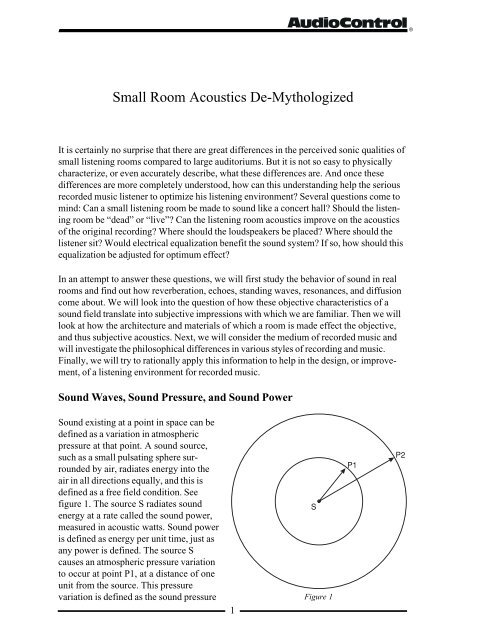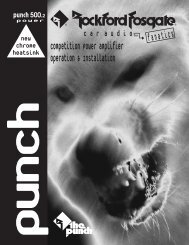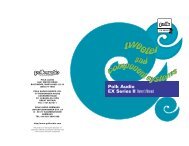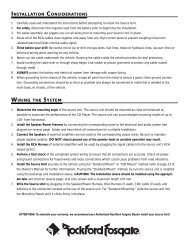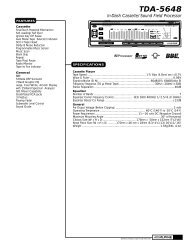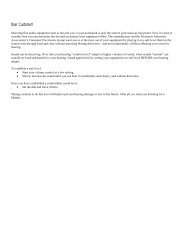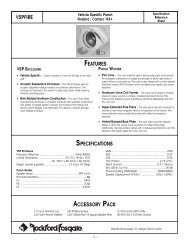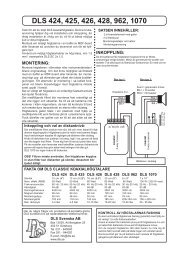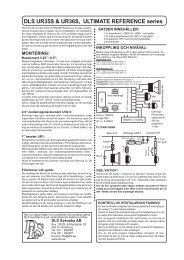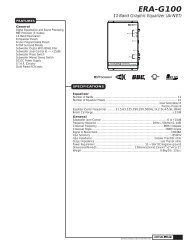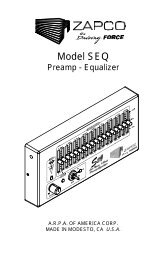Small Room Acoustics De-Mythologized - Eporia
Small Room Acoustics De-Mythologized - Eporia
Small Room Acoustics De-Mythologized - Eporia
Create successful ePaper yourself
Turn your PDF publications into a flip-book with our unique Google optimized e-Paper software.
®<strong>Small</strong> <strong>Room</strong> <strong>Acoustics</strong> <strong>De</strong>-<strong>Mythologized</strong>It is certainly no surprise that there are great differences in the perceived sonic qualities ofsmall listening rooms compared to large auditoriums. But it is not so easy to physicallycharacterize, or even accurately describe, what these differences are. And once thesedifferences are more completely understood, how can this understanding help the seriousrecorded music listener to optimize his listening environment? Several questions come tomind: Can a small listening room be made to sound like a concert hall? Should the listeningroom be “dead” or “live”? Can the listening room acoustics improve on the acousticsof the original recording? Where should the loudspeakers be placed? Where should thelistener sit? Would electrical equalization benefit the sound system? If so, how should thisequalization be adjusted for optimum effect?In an attempt to answer these questions, we will first study the behavior of sound in realrooms and find out how reverberation, echoes, standing waves, resonances, and diffusioncome about. We will look into the question of how these objective characteristics of asound field translate into subjective impressions with which we are familiar. Then we willlook at how the architecture and materials of which a room is made effect the objective,and thus subjective acoustics. Next, we will consider the medium of recorded music andwill investigate the philosophical differences in various styles of recording and music.Finally, we will try to rationally apply this information to help in the design, or improvement,of a listening environment for recorded music.Sound Waves, Sound Pressure, and Sound PowerSound existing at a point in space can bedefined as a variation in atmosphericpressure at that point. A sound source,such as a small pulsating sphere surroundedby air, radiates energy into theair in all directions equally, and this isdefined as a free field condition. Seefigure 1. The source S radiates soundenergy at a rate called the sound power,measured in acoustic watts. Sound poweris defined as energy per unit time, just asany power is defined. The source Scauses an atmospheric pressure variationto occur at point P1, at a distance of oneunit from the source. This pressurevariation is defined as the sound pressure Figure 11


